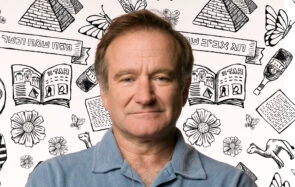There’s a new movie coming out that I want to love, and that many people with special needs and disabilities should feel represented by–but it seems the entire thing falls short. The movie I’m talking about is called “Wonder,” which stars Julia Roberts and Jacob Tremblay (the boy from “Room”).
The film, which releases this upcoming November, is based on the bestselling middle school-age children’s novel of the same name–and the trailer was recently released to some praise.
So, why does it miss the mark? Well, first of all, the obvious reason is the fact that it’s about a kid with special needs and disabilities, about perceived difference–and yet, it’s played by an actor who doesn’t actually have special needs.
The story centers around a fifth grader named Auggie Pullman who is going to public school for the first time–as he’s he’s been home-schooled his entire life, because he has facial deformities. As Tablet pointed out, the book doesn’t explain what they are, but author R.J. Palacio stated that it was based on Treacher-Collins syndrome.
From the trailer, the movie, then, seems to follow a plot-line focuses on bullying and acceptance–which are good themes for kids to learn about and see on the big screen as a way to understand life’s nuances.
And at first, the preview hits all the right heartstrings–showing Auggie walk alone through the hallways and having all the other kids stare at him. What I do love is that the camera angle is at his height, showing us what it would be like from his POV, and not necessarily an adult’s.
It then breaks our hearts as we see Auggie cry, saying between gulps, “I’m ugly.” When his mom (played by Julia Roberts) says he’s not, he’s says, “You just have to say that because you’re my mom.” How many moms know that sinking feeling when their kids open up about their insecurities? How many of us understand what it feels like to feel unwanted and unlovable? These moments play on our emotions in ways that connect us. And yes, that is amazing.
What’s not amazing is the fact that, time and time again, people who do not have disabilities play people who do–as if the people these movies are about aren’t actually good enough or important enough to be represented.
And yes, it’s a movie, but it’s a movie about real life.
So, we should start showing what real life and real people are actually like. In this case, why not have someone in the role who actually has what Auggie does (or something similar)? And why have lines (like below) that continually enforce otherness and difference, as opposed to challenge the views of normalcy?
Even more so, however, is the fact that Auggie often wears a mask out in public often–which is clearly something his mom allows him to do. While playing dress up and pretend are totally valuable things for children to do to grow their imagination, it also implies his difference in appearance makes him hard to look at. What kind of message does that send to people with disabilities? And why would any parent encourage that kind of hiding to begin with?
Mike Moody, a 26-year-old writer and composer in Warwickshire, UK, started tweeting about how the movie just doesn’t get it–and how it’s offensive to her as a person with disabilities. Moody wrote:
“It really, really, really makes me upset to see Jacob Tremblay in that mask. Like our disfigurements are a costume. This is trauma, when 99 percent of the disfigurements Disfigured people see on screen are makeup.”
Moody brings up the perfect point that the movie sugarcoats its portrayal with catch phrases like, “You’re the toughest kid in school!” and supportive parents who always say and do the right things, in order to get that heartwarming effect, as if people with disabilities are around for able-bodied folks’ inspiration. She said:
“AS IF DISFIGURED PEOPLE DO NOT EXIST. AS IF WE ARE A COSTUME, A MAKEUP PROJECT.”
Jay Ruderman of the Ruderman Family Foundation explained to Tablet that “people with disabilities make up 20 percent of the U.S. population, but fewer than 1 percent of TV characters. And of that tiny number, only 5 percent are actually played by actors with disabilities.” He stated:
“Imagine if only 5 percent of female characters were played by women. It is a matter of social justice to have a large segment of our population authentically represented in the mass entertainment… It is necessary to create an environment where actors with disabilities have access to play characters with disabilities.”
Of course, this doesn’t mean the movie is either all good or all bad, either, as most art lives in gray zones–it could still raise awareness for many kids and parents who don’t know much about inclusivity, especially considering it’s a major movie and not an indie.
However, this also doesn’t mean we can’t be critical of how media, movies, and art tell stories of marginalized people and communities–as a way to figure out how to keep doing it better and better.
Watch the the trailers below:
https://youtu.be/fciS0Wg8Mpk










